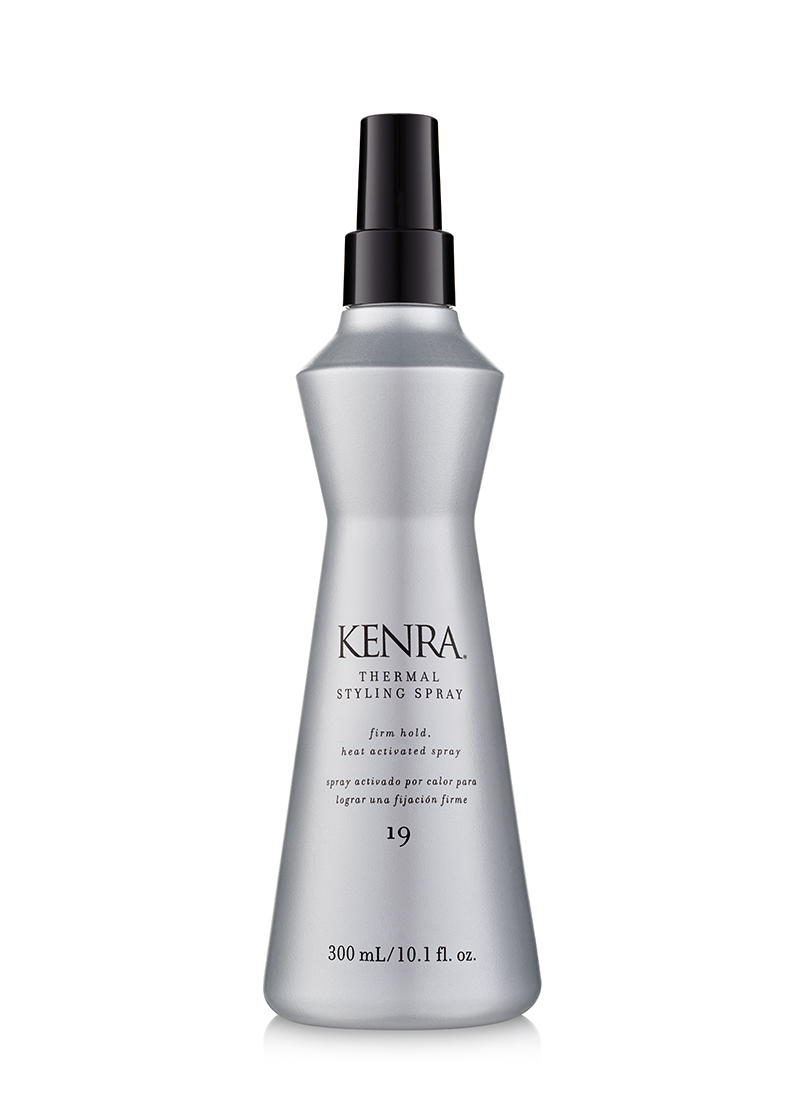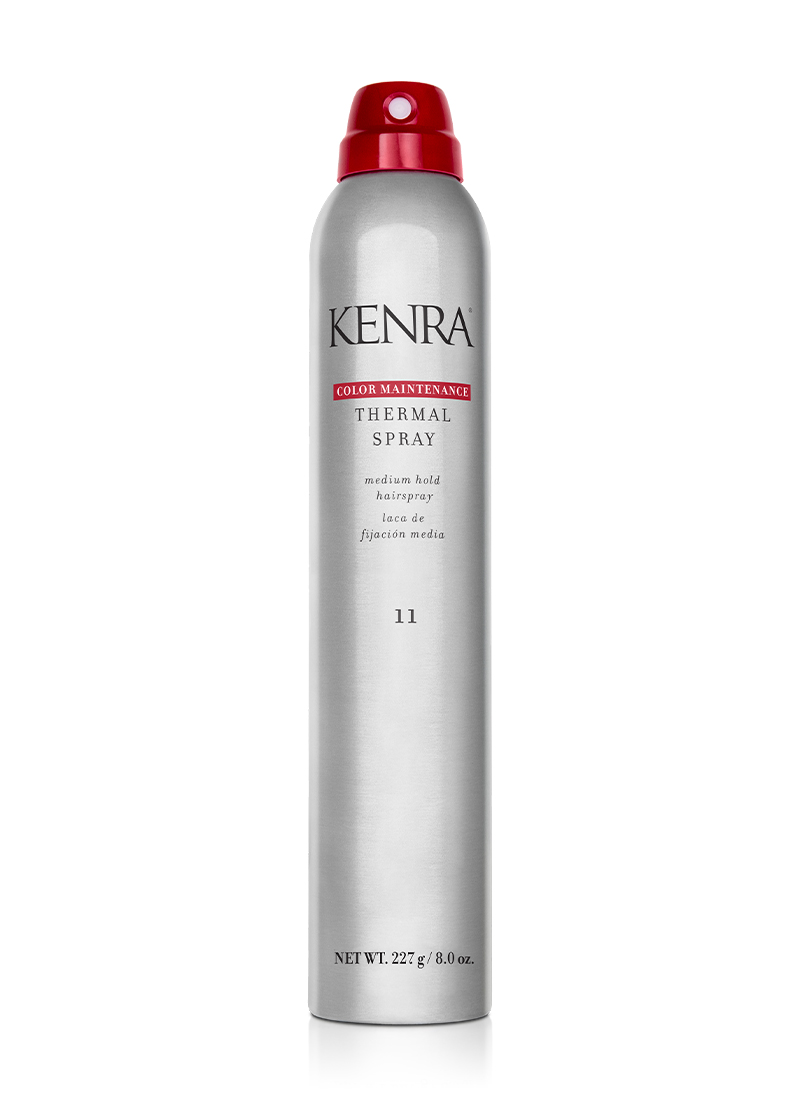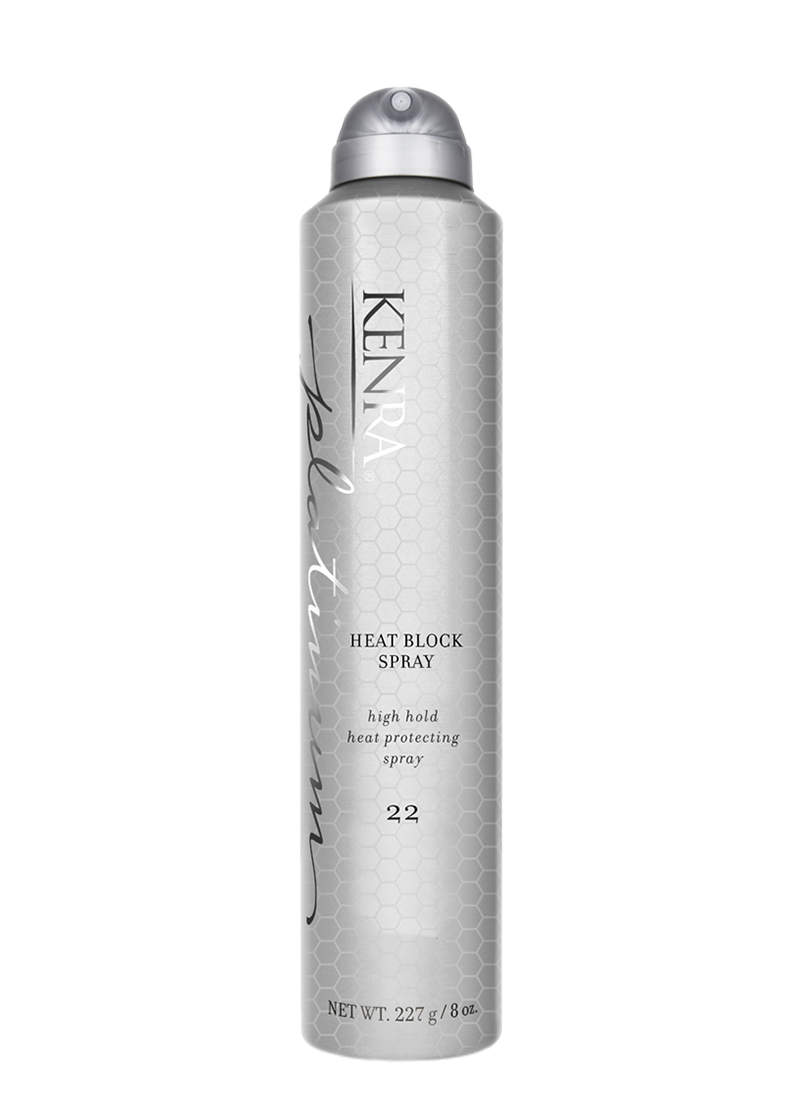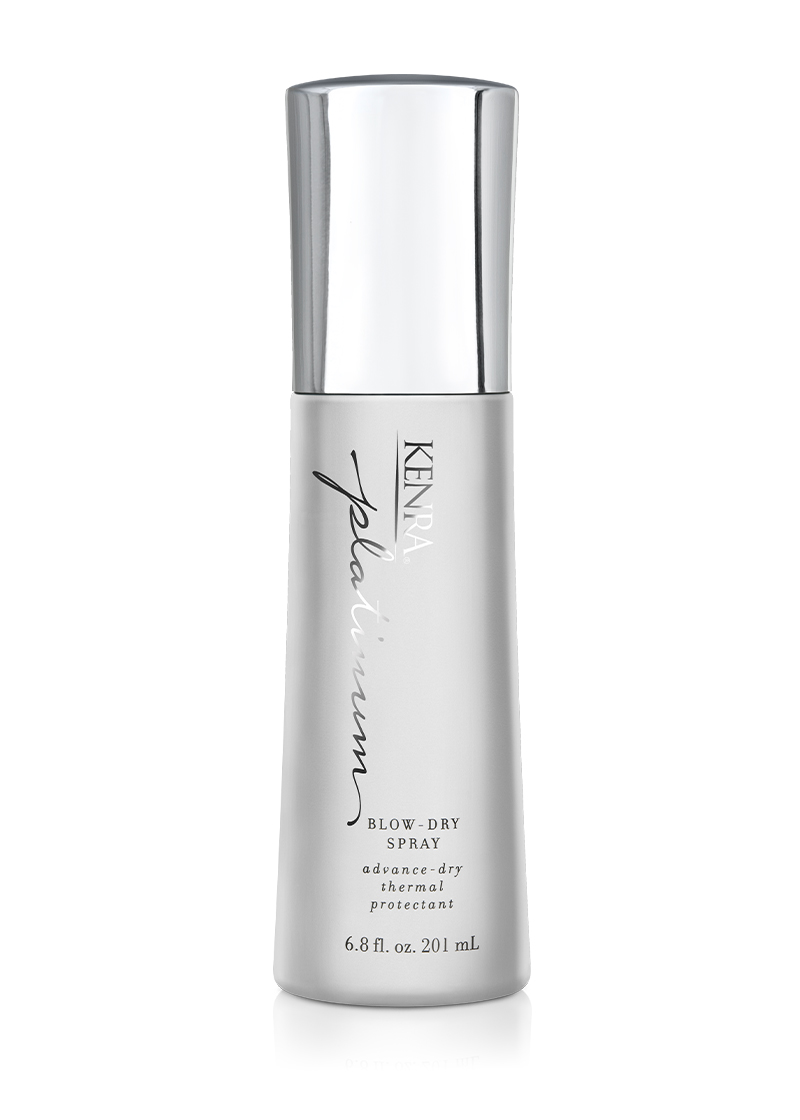Does Heat Protectant Actually Work and Do You Need It?
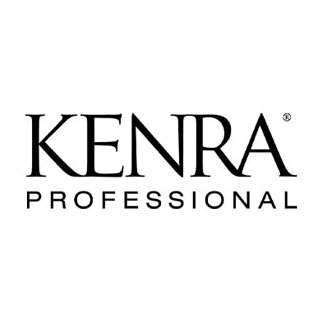
By: Kenra Professional
We’ve all seen promotions for styling products that claim to offer protection against heat. Since most of us are avid users of hair straighteners, curling irons, blow dryers, and other heated appliances, they often leave us wondering whether they really work and whether they are worth implementing into our hair routine.
So, does heat protectant actually work? The short answer is… yes, it does! A fuller understanding of how heat impacts your hair and the function of protectants is a little more
Whether or not you decide to try out a heat protectant is up to you, but we’ll cut to the chase and tell you right now that we recommend it. Allow us to explain why.
How Does Heat Impact Your Hair?
Much of your hair’s health is dependent upon the state of its inner hair cuticles. Hair cuticles are formed from dead cells that overlap in layers and create scales that protect the hair shaft.
This, in turn, keeps the strands together. When the hair is exposed to excessive heat, it can manipulate the structure of the shaft and damage these protective scales. The scales may then fall apart, resulting in a loss of the hair’s protectant layer. This typically leads to hair drying out and separating.
Where Is All This Heat Coming From?
Now that you have an understanding of the negative effects of heat on hair, it is useful to locate the source of your potential problem.
Styling Tools
Some of the most commonly used styling tools involve applying high levels of heat to our hair. Whether we are looking to make our curly hair straight or vice-versa, ironing tools require heat to work effectively, sometimes causing thermal damage to our hair, particularly our cuticles, in the process.
Essentially, this happens because heat styling tools break down the hydrogen bonds that form between the keratin proteins in each strand of hair. This can strip it of its natural oils and proteins.
Breaking down these bonds is what allows us to alter our hair’s texture and style our hair in any fashion that we desire. While beneficial in one sense, frequent use of styling tools can make your hair overall weaker and more prone to breakage.
Chemicals
Although undergoing chemical procedures at your local salon is designed to be safe, too many appointments in too short an amount of time can be bad news for your hair’s health.
There is no need to stop yourself from getting creative with your hair and trying out all the fabulous looks you’ve been dreaming of, but practicing moderation can make a huge difference in protecting your hair from the heat emitted by chemicals found in certain hair products.
For example, if you are planning on getting your hair colored, there is a chance that the process may include the use of hair-lightening products containing bleach. While bleach is extremely effective for removing pigment from the hair, it does naturally heat up as its chemicals are activated.
The chemical compound of bleach is harsh and can potentially break apart your hair’s protein. For this reason, you may want to wait several weeks before your next touch-up, depending on your look.
Environment
While the heat from styling tools and chemical treatments are two of the most frequent culprits of heat-induced hair damage, the unsuspecting cause of your troubles may very well be the outdoors!
Excessive unprotected exposure to the sun can have a negative impact on your hair’s health. UV radiation from the sun can dry out your hair and, in some instances, even cause discoloration. The chances of this increase for those with recently bleached or colored hair.
The wind can also play a role in heat—yes, heat —damage. In general, wind, whether it is hot or not, tends to knot loose hair. The detangling of hair requires combing or brushing and, if not done gently, this can result in knotted strands breaking.
Add heat to the equation and it only makes things trickier. Dry, hot winds can remove moisture from our scalp, wearing away at our beloved cuticles. Remember, unhealthy cuticles mean less protection for the shaft and more vulnerable hair.
How To Identify Heat-Damaged Hair
There is a chance that your hair might already be struggling with thermal damage. Have you recently been struggling with more flakiness, dryness, or split ends than usual? These pesky symptoms might very well be heat-induced!
Some of the telltale signs of heat-damaged hair include:
Split ends
Hair breakage
Rough hair texture
Stringy hair texture
Frequent knotting
If you believe that you may have fallen victim to the effects of heat damage, have no fear! It is never too late to start protecting your hair against heat.
Heat Protectant
More often than not, the way that heat protectant works is that, once applied, the ingredients in the product will form a thin film on the hair’s surface. This film essentially has two functions.
The first is to help distribute any heat that the hair is exposed to more evenly. The second is to help slow down conduction and to heat the hair up more gradually. Together, these functions result in the overlying function of a heat protectant which is to offer you and your locks thermal protection.
It is important to note that heat protectants, as much as we might want them to be, are not miracle workers. They cannot offer you complete protection from every styling tool, chemical compound, or environmental encounter, but they can help with reducing hair damage.
In order to get the most bang for your buck, you should make sure that you are using the product most suited for your needs and that you are applying the product correctly.
If you are looking for a protectant to specifically help with blow-drying, we recommend the Kenra Platinum Blow-Dry Spray. This product can provide protection up to 428°F.
With the average blow dryer heating up to about 140°F maximum (with exceptions, of course), this advanced dry thermal protectant can help to prevent damage and breakage without any interruptions to your hair routine.
If you are looking for a protectant to apply to dry hair, we recommend the Kenra Professional Thermal Styling Spray 19. This firm hold heat-activated spray should be sprayed liberally onto a single section of hair before applying heat from a styling tool on the same area. Then, when you have gone through every section, you can spray the protectant over the entire style to tame flyaways and add shine.
If you are looking for a protectant to use specifically on colored hair that can combat issues of discoloration, we recommend the Kenra Professional Color Maintenance Thermal Spray 11. Similar to the Thermal Styling Spray 19, this product, designed to lock in 98% of color pigments, can be sprayed on before using any hot tools for thermal protection and can be used as a finisher.
If you are looking for a protectant that can be used as a finishing spray, we recommend the Kenra Platinum Heat Block Spray 22. You can apply this spray evenly on your finished hair for an all-day hold and can reapply throughout the day as you see fit.
Remember, the sun’s UV rays can have an effect on your hair, so wearing a protectant like this one that provides heat protection up to 450°F can be useful for preventing breakage throughout the day.
You Need Heat Protectant—Trust Us
There are many different heat protectants on the market, but they are seemingly there for good reason. We recommend further researching the various heat protectant products available and choosing the one the best suits your needs. We want you to live your life to the fullest with a healthy, protected head of hair.
Sources:
Healthy hair: what is it? | PubMed
Our World | PSU

